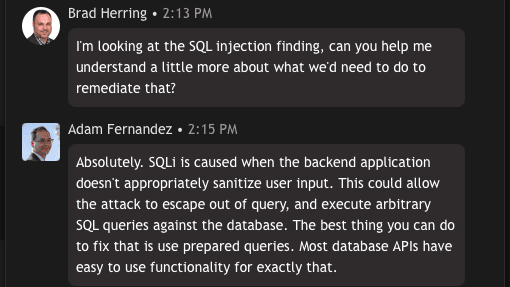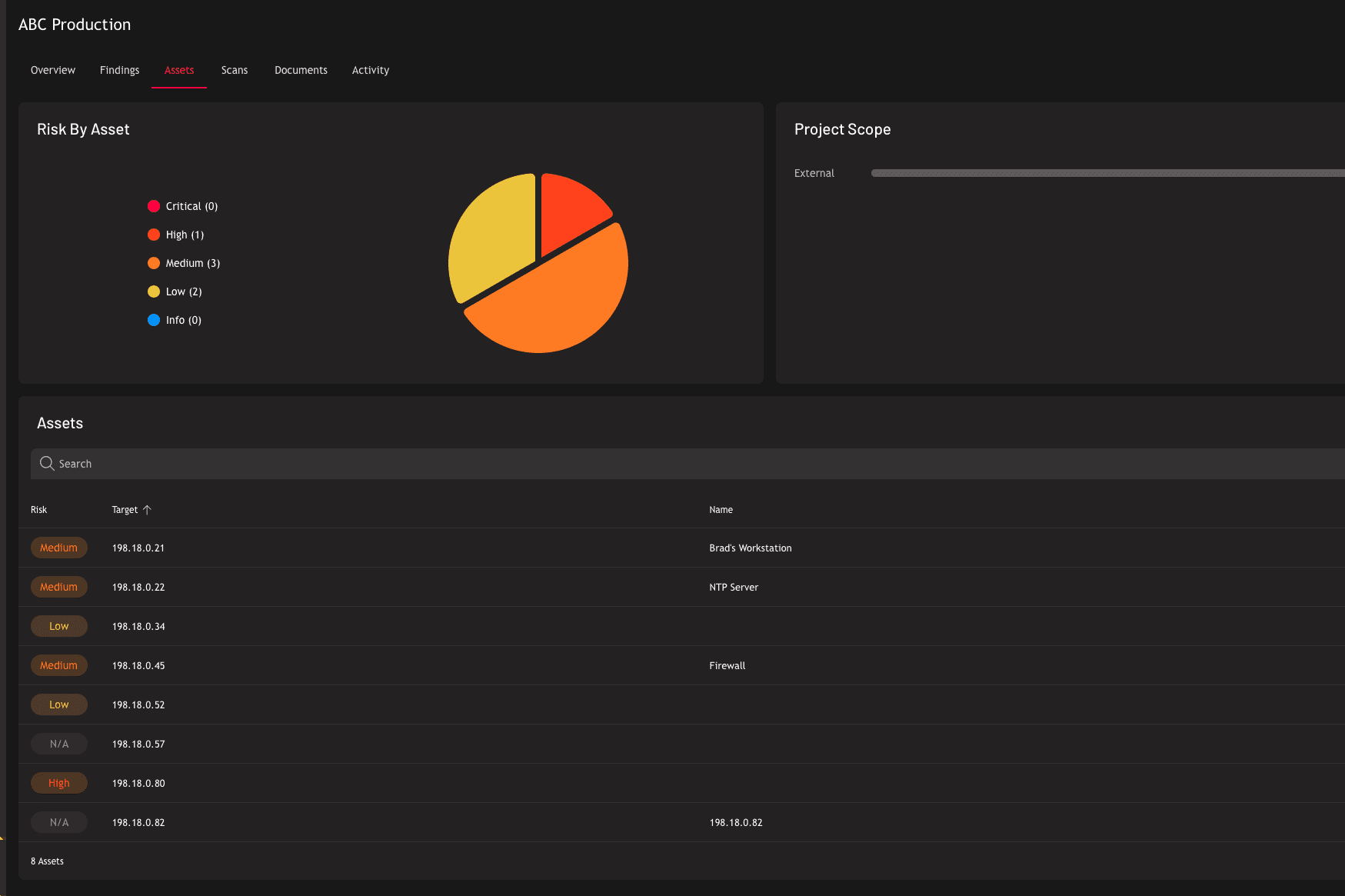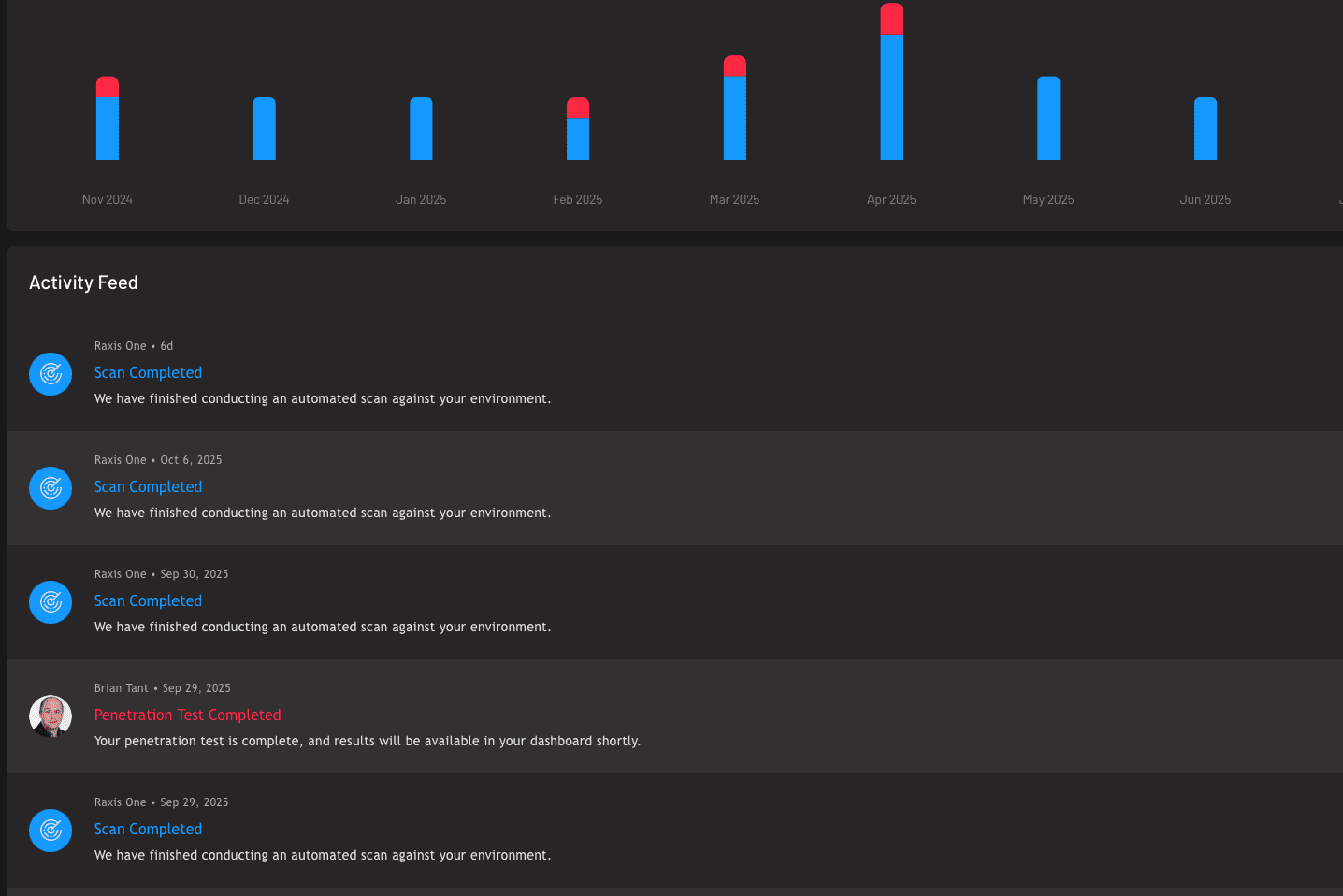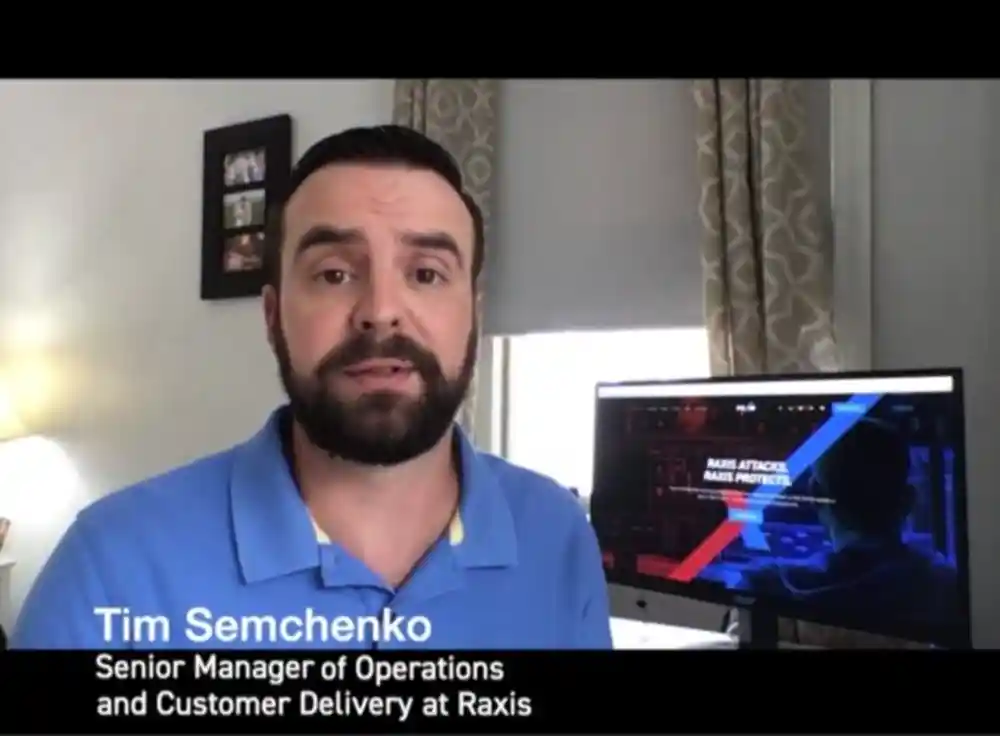Penetration Testing Services
Fortify your security with AI-augmented, expert-driven penetration testing services for comprehensive protection.
Raxis Attacks. Raxis Protects.
Born from the hacker mindset. Built for penetration testing service excellence.

Penetration Testing Services Uniting Human Expertise with AI Precision
Experience augmented penetration testing that merges the expertise of highly skilled ethical hackers with the power of AI automation. This approach uncovers hidden vulnerabilities, delivers thorough assessments, and provides real time insights along with actionable recommendations. With human ingenuity and AI working together, you gain efficient and deeply insightful security testing that helps your organization stay ahead of evolving threats.
Uncover Hidden Risk
By combining the expertise of ethical hackers with powerful AI automation, our penetration testing services uncover hidden risks across your systems and applications, providing actionable intelligence to strengthen your security and protect your organization against emerging threats.
Adhere to Regulatory Requirements
Raxis Penetration Testing Services are vital for meeting regulatory compliance requirements in frameworks such as PCI DSS, HIPAA, GLBA, SOC 2, ISO 27001, and others. These services help organizations maintain strong security controls and ongoing compliance with industry standards.
Reduce Exposure Time
A Raxis Strike Penetration Test can preemptively identify security vulnerabilities, saving organizations from the devastating impact of data breaches, which on average take 277 days to detect and contain and cost $4.35 million.
Protect Your Brand
Raxis penetration testing services and the resulting attestation letter demonstrate your commitment to data security, helping build and maintain customer confidence in your brand.
Justify Cybersecurity Spending
Safely demonstrating the effects of a real hack against your infrastructure is a highly effective method to justify the investment in cybersecurity.
Two Penetration Testing Approaches
Raxis offers unlimited continuous penetration testing services as well as point in time assessments.
Penetration Testing as a Service

PTaaS: Penetration Testing as a Service
Raxis Attack PTaaS is a continuous penetration testing as a service platform that delivers real time security assessments, expert insights, and seamless integration into your development workflows to protect networks, applications, and APIs.
Penetration Testing Methodology
For over 14 years, Raxis has been a trusted penetration testing company, partnering with organizations of all sizes and industries. We deliver exceptional penetration testing services through our Raxis Strike offering, blending expert manual testing with advanced automation for stronger security. Guided by the MITRE ATT&CK framework, our US based team takes an AI-augmented approach to precisely identify and address vulnerabilities, providing comprehensive assessments to truly strengthen your defenses.
Every organization faces unique security challenges, so we begin by working closely with you to define the scope of the penetration test. This includes identifying the systems, applications, or networks to be tested and setting clear objectives for the engagement. Whether you need an external network test, internal system evaluation, or application-specific assessment, we tailor our penetration testing services to align with your specific needs and industry requirements.
Raxis meticulously gathers and analyzes publicly available data about your organization and its employees to identify potential security risks. From public websites and social media profiles to domain registries and dark web sources, we uncover critical information that cybercriminals could exploit. Our expert team evaluates this data to detect vulnerabilities, such as exposed credentials or sensitive details, enabling you to mitigate risks before they’re weaponized.
Once the scope is defined, our penetration testing services identify vulnerabilities across your systems using a combination of manual techniques and advanced tools. Our experts analyze for issues such as misconfigurations, outdated software, insecure protocols, and exploitable code. Unlike automated scans, our hands-on approach delivers a thorough assessment, uncovering complex vulnerabilities that automated tools often miss.
Raxis enhances security with a dedicated threat modeling phase as part of our penetration testing services. Using both manual and AI-assisted tools, we identify and catalog your critical assets, map potential threats using intelligence from public sources and the dark web, and develop detailed attack plans to simulate real adversary tactics. This proactive approach delivers actionable strategies, helping your organization prioritize risks and build stronger defenses against sophisticated cyber threats.
We simulate real world cyberattacks with manually created, open source, and AI-assisted tools to deliver a realistic evaluation of your security defenses. Our team uses the same techniques as malicious hackers to test your ability to detect and respond to threats like phishing, privilege escalation, lateral movement, and data exfiltration. This commitment to advanced testing is why organizations turn to us as the leading penetration testing company called in to clean up after others fall short.
As part of our penetration testing services, we safely exploit identified vulnerabilities within scoped parameters to demonstrate how attackers could gain unauthorized access or exfiltrate sensitive data. Our controlled approach provides detailed proof of concept scenarios, helping you understand the potential impact, prioritize remediation, and strengthen your security posture.
Raxis penetration testing services reveal the real world impact of a breach through detailed post exploitation testing. We evaluate compromised systems based on data sensitivity and the possibility of further network attacks. By using manual techniques that mirror current threats, our team simulates pivoting, privilege escalation, and data compromise to uncover critical risks. When appropriate, we safely exfiltrate and redact data to demonstrate actual exposure, delivering actionable insights to help strengthen your defenses against advanced adversaries.
At the end of each engagement, Raxis delivers a comprehensive report with all findings. The report prioritizes vulnerabilities by severity, explains associated risks and business impact, and provides proof of concept exploits with clear, tailored remediation recommendations for your technical team. It also includes a detailed storyboard showing how an attacker could exploit multiple vulnerabilities in sequence.
Raxis penetration testing services go beyond simply reporting vulnerabilities. In a comprehensive debrief session, our experts guide you through the test findings, clarify results, and answer your questions. We offer tailored, actionable recommendations and help prioritize remediation, collaborating on a strategic plan that enables your team to efficiently mitigate risks and maintain strong defenses against evolving cyber threats.
Raxis penetration testing services include comprehensive retesting to ensure your remediation efforts are effective. We thoroughly re-evaluate previously identified vulnerabilities to confirm they are resolved and no longer exploitable. Our rigorous process also checks for new risks that may have emerged during remediation, giving you confidence in your strengthened security and protection against evolving threats.
Human-Led Penetration Testing
Every organization faces unique security challenges. As a top penetration testing company, Raxis leads each assessment with expert human insight, customizing for your environment to ensure maximum relevance and effectiveness. Our service adapts to test external networks, APIs, mobile applications, and IoT devices across diverse technology landscapes.
AI-Augmented Pentesting Services
Raxis penetration testing services combine expert human engineers with advanced AI to enhance every phase, from attack simulation to reporting. Our approach streamlines testing and delivers clear, actionable insights to strengthen your security. We keep your data safe with strict privacy controls and never use it for AI training, ensuring complete confidence in our process.
Realistic Attack Simulations
Unlike traditional vulnerability scans, Raxis Strike offers penetration testing services led by skilled ethical hackers who simulate sophisticated cyberattacks using actual hacker-created exploits. Our experts drive the process, with AI tools used only to enhance their analysis and reporting. These simulations provide invaluable insights into how attackers could compromise systems, escalate privileges, and exfiltrate sensitive data.
Industry-Specific Expertise
Raxis brings industry specific knowledge to every engagement, efficiently targeting vulnerabilities unique to each customer’s sector. Our expertise ensures penetration testing services address regulatory standards such as PCI DSS, HIPAA, GDPR, and ISO 27001, while focusing on risks most relevant to your industry.
Black Box, White Box, and Grey Box Penetration Testing Services
Our penetration testing service scoping options follow industry standards to ensure comprehensive coverage.
Black Box
The penetration tester receives no prior information about the target systems, simulating an external attacker with no inside knowledge.
Grey Box
A hybrid approach where partial information is shared, typically including some credentials or limited system details.
White Box
The organization provides complete network details, system information, credentials, and documentation to the penetration tester.
Why a Penetration Test Won’t Break Your Network
Raxis’ Tim Semchenko shows that the Raxis penetration testing process is built around keeping your network stable during your test.
Frequently Asked Questions
Raxis provides comprehensive penetration testing services including external network testing, internal network assessments, web application testing, API security testing, mobile application testing, cloud infrastructure testing (AWS, Azure, GCP), IoT assessments, wireless network testing, and Red Team engagements. We also offer specialized testing for specific compliance requirements like PCI DSS, HIPAA, SOC 2, ISO 27001, and CMMC.
Raxis Strike is our traditional penetration testing service—a comprehensive, point-in-time security assessment that provides in-depth analysis of your systems, applications, or networks. It’s ideal for annual compliance testing or one-time security evaluations.
Raxis Attack is our Penetration Testing as a Service (PTaaS) offering that provides unlimited, continuous penetration testing throughout the year. It includes real-time vulnerability monitoring, ongoing expert assessments, and seamless integration into your DevSecOps workflows through the Raxis One platform. This is perfect for organizations that need continuous security validation and faster identification of emerging threats.
Raxis combines the expertise of elite human penetration testers with advanced AI tools to enhance every phase of testing—from reconnaissance and attack simulation to analysis and reporting. Our AI augmentation streamlines the testing process and helps identify patterns faster, but the testing is always led by skilled ethical hackers who use real-world attack techniques. Unlike automated vulnerability scans, our experts drive the process while AI enhances their efficiency and provides clearer, more actionable insights. We maintain strict privacy controls and never use your data for AI training.
A vulnerability scan is an automated tool that identifies known vulnerabilities in your systems—essentially checking boxes against a database of known issues. Penetration testing goes much further. Our experienced ethical hackers manually exploit vulnerabilities, chain multiple weaknesses together, and simulate sophisticated real-world attacks to demonstrate actual risk. We show you how an attacker could gain access, escalate privileges, move laterally through your network, and exfiltrate sensitive data—providing true insight into your security posture that automated scans simply cannot deliver.
These terms describe the level of information provided to our testers before the engagement:
- Black Box Testing: Our team has no prior knowledge of your systems, simulating an external attacker with no insider information. This tests your defenses from an outsider’s perspective.
- Grey Box Testing: We’re provided with limited information (like user credentials or basic network diagrams), simulating an attacker with some insider knowledge or a compromised user account.
- White Box Testing: Full transparency—we receive complete documentation, credentials, source code, and architecture diagrams. This allows for the most comprehensive assessment and is ideal for identifying every possible vulnerability.
Each approach offers unique insights, and we’ll help you determine which is best for your security objectives.
The duration varies based on scope and complexity. Most traditional penetration tests (Raxis Strike) take 1-3 weeks from start to finish, including testing and report delivery. Smaller focused assessments may be completed faster, while comprehensive enterprise-wide tests may take longer. With Raxis Attack (PTaaS), testing is continuous and ongoing throughout your subscription period, providing real-time security insights year-round.
Raxis takes great care to minimize disruption. We work closely with you to establish rules of engagement, testing windows, and emergency escalation procedures. Most tests can be conducted with minimal to no impact on operations. If you have concerns about specific systems or peak business hours, we can schedule testing during maintenance windows or off-peak times. Our team maintains constant communication and can pause testing immediately if any issues arise.
Our team holds elite industry certifications including:
- Offensive Security Certified Professional (OSCP)
- Offensive Security Certified Expert (OSCE)
- Certified Information Systems Security Professional (CISSP)
- Certified Ethical Hacker (CEH)
- Certified Information Security Manager (CISM)
- GIAC Penetration Tester (GPEN)
- AWS Certified Security Specialty
- And many more
Beyond certifications, our team has real-world experience breaching security controls for some of the most protected organizations in the world. We’ve conducted over 600 penetration tests annually and successfully breached controls to retrieve protected data over 85% of the time.
Raxis penetration testing services fulfill various compliance mandates including:
- PCI DSS (Payment Card Industry Data Security Standard)
- HIPAA (Health Insurance Portability and Accountability Act)
- SOC 2 (System and Organization Controls)
- ISO 27001 (Information Security Management)
- NIST 800-171 / CMMC (Cybersecurity Maturity Model Certification)
- SOX (Sarbanes-Oxley Act)
- GLBA (Gramm-Leach-Bliley Act)
Our reports include attestation letters demonstrating your commitment to data security, helping you meet audit requirements and build customer confidence.
The MITRE ATT&CK framework is a globally recognized knowledge base of real-world adversary tactics, techniques, and procedures (TTPs). Raxis uses this framework to guide our penetration tests, ensuring we simulate authentic attack scenarios that mirror how actual threat actors operate. This approach provides you with realistic insights into how attackers would target your organization, from initial access through data exfiltration, helping you prioritize defenses against the most relevant threats.
You’ll receive a comprehensive penetration testing report that includes:
Executive Summary – High-level overview of findings and business impact for C-suite and board members
Detailed Technical Findings – In-depth documentation of every vulnerability discovered, including:
- Clear descriptions and risk ratings
- Proof-of-concept screenshots and evidence
- Step-by-step exploitation details
- Affected systems and services
Remediation Guidance – Prioritized, actionable recommendations with specific steps to fix each vulnerability
MITRE ATT&CK Mapping – Alignment of findings to recognized attack techniques
Additionally, we provide a comprehensive debrief session where our experts walk you through the findings, answer questions, and help you develop a remediation strategy. All reports are accessible through our secure Raxis One platform.
Yes! Raxis includes comprehensive retesting to validate that your remediation efforts are effective. We thoroughly re-evaluate previously identified vulnerabilities to confirm they’ve been properly resolved and are no longer exploitable. We also check for any new risks that may have emerged during the remediation process, giving you confidence in your strengthened security posture. This is included with both Raxis Strike and Raxis Attack services.
We recommend penetration testing at least annually at minimum. However, you should also conduct testing:
- After major infrastructure changes or system upgrades
- Following new application deployments
- After mergers or acquisitions
- When adding new cloud environments or services
- As required by compliance standards (many require annual testing)
- After security incidents
For organizations with rapidly changing environments, DevSecOps teams, or high-risk profiles, continuous testing through Raxis Attack (PTaaS) provides ongoing security validation and faster threat identification.

